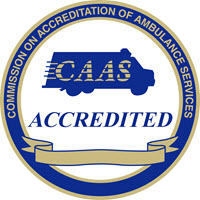101 Organization
Purpose
The clear delineation of service ownership and organizational structure is necessary to assure accountability to customers, partners, medical oversight, and local/state/federal authorities. These standards are important for the organization to maximize its own effectiveness and to be responsive to the public.
101.01 Ownership
101.02 Organizational Structure
102 Inter-Agency Relations
Purpose
Positive inter-agency relations are necessary to provide high quality patient care services. A high quality EMS system depends on cooperation between various types of public safety agencies and all local EMS providers. The following standards are to emphasize these relationships.
102.01 Mutual Aid
102.02 Disaster Coordination
102.03 Conflict Resolution
102.04 Inter-Agency Dialogue
103 Management
Purpose
The purpose of these standards is to establish general management policies and practices not specifically addressed in other sections.
103.01 Policies and Procedures
103.02 Strategic Planning
103.03 Management Development
103.04 Information Management
104 Financial Management
Purpose
Standards in this section relate to the general need for an emergency medical services provider to accurately track and plan for its fiscal resources while meeting its day-to-day management responsibilities.
104.01 Financial Policy
104.02 Budgeting and Financial Statements
104.03 Accounts Receivable
104.04 Insurance
105 Community Relations and Public Affairs
Purpose
Due to the high visibility and unique expertise of EMS agencies, there exists a responsibility to keep the public well informed about out-of hospital care and related health issues These agencies must maintain a respected, high profile to enhance out-of-hospital care in their communities.
105.01 Community Education, Health Promotion & Injury Prevention
105.02 Community Relations
105.03 Media Relations
106 Human Resources
Purpose
The process by which an EMS agency selects, trains, and maintains a working relationship with employees is critical to the success of the agency.
106.01 Credentials
106.02 Compensation Package
106.03 Discipline/Corrective Action
106.04 Problem Resolution
106.05 Recruitment & Hiring
106.06 Employee Training & Development
106.07 Conduct
106.08 Performance Evaluations
106.09 Subcontractor Personnel
201 Clinical Standards
Purpose
Well-defined clinical standards are an essential foundation to the provision of quality out-of-hospital health care.
201.01 Medical Oversight
201.02 Clinical Protocols
201.03 Medical Records
201.04 Staffing
201.05 Response Plan
201.06 Clinical Standards Performance Improvement
202 Safe Operations & Managing Risk
Purpose
Comprehensive safety standards are required to assure that patients, employees, and the agency are protected from unnecessary risk.
202.01 Vehicle Safety
202.02 Employee Safety
202.03 Patient Safety
202.04 Patient Personal Property
202.05 Incident Reporting
202.06 Loss Control
203 Equipment & Facilities
Purpose
All equipment and facilities must be maintained to a high standard to assure the delivery of quality patient care.
203.01 Vehicles
203.02 Vehicle Maintenance
203.03 Medical Equipment
203.04 Durable Medical Equipment Maintenance
203.05 Disposable Items
203.06 Facilities
204 Communications Center
Purpose
Efficient call taking, effective resource deployment, and continuous communications capabilities are required to maintain an effective EMS agency.
204.01 Policies and Procedures
204.02 Contingency Plans
204.03 Preventive Maintenance
204.04 Training
204.05 Licensure
204.06 Communications Inter-Agency Dialogue
204.07 Communications Performance Improvement

